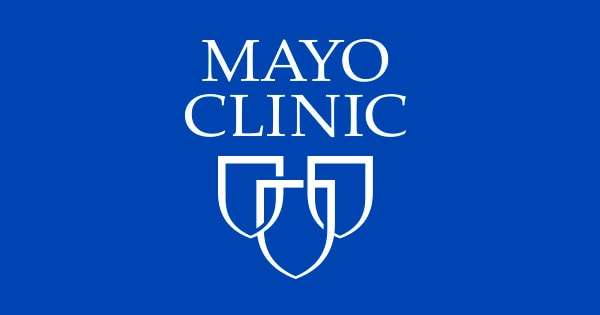How to Become a Speech-Language Pathologist
About this section

Some speech-language pathologists specialize in working with specific age groups, such as children.
Speech-language pathologists typically need at least a master’s degree in speech-language pathology. All states require that speech-language pathologists be licensed. Requirements for licensure vary by state.
Education
Speech-language pathologists typically need at least a master’s degree in speech-language pathology. These programs usually take 2 years of postbaccalaureate study. Although master’s degree programs may not require a particular bachelor’s degree for admission, they frequently require applicants to have completed coursework in biology, social science, or certain healthcare and related fields. Requirements vary by program.
Graduate programs often include courses in speech and language development, age-specific speech disorders, alternative and augmentative communication, and swallowing disorders. These programs also include supervised clinical experience.
Graduation from an accredited program is required for certification and, often, for state licensure. The Council on Academic Accreditation (CAA), accredits education programs in speech-language pathology.
Licenses, Certifications, and Registrations
All states require speech-language pathologists to be licensed. Licensure typically requires at least a master’s degree from an accredited program, supervised clinical experience gained both during and after completing the program, and passing an exam. For specific requirements, contact your state’s medical or health licensure board.
Speech-language pathologists may earn the Certificate of Clinical Competence in Speech-Language Pathology (CCC-SLP) offered by the American Speech-Language-Hearing Association. Certification typically satisfies some or all of the requirements for state licensure and may be required by some employers. To earn CCC-SLP certification, candidates must graduate from an accredited program, pass an exam, and complete a fellowship that lasts several months and is supervised by a certified speech-language pathologist. To maintain the CCC-SLP credential, speech-language pathologists must complete a specified number of hours of continuing education.
Speech-language pathologists who work in schools may need a teaching certification. For specific requirements, contact your state’s department of education or the school district or private institution in which you are interested.
Speech language pathologists may choose to earn specialty certifications in child language, fluency, or swallowing. Candidates who hold the CCC-SLP, meet work experience requirements, complete continuing education hours, and pass a specialty certification exam may use the title Board Certified Specialist. Three organizations offer specialty certifications: American Board of Child Language and Language Disorders, American Board of Fluency and Fluency Disorders, and American Board of Swallowing and Swallowing Disorders.
Some employers prefer to hire candidates with cardiopulmonary resuscitation (CPR) or basic life support (BLS) certification.
Training
Candidates may gain hands-on experience through supervised clinical work, which is typically referred to as a fellowship. Prospective speech-language pathologists train under the supervision of a certified speech-language pathologist to refine their skills after the completion of the graduate degree.
Important Qualities
Analytical skills. Speech-language pathologists must select appropriate diagnostic tools and evaluate results to identify goals and develop a treatment plan.
Communication skills. Speech-language pathologists need to explain test results, diagnoses, and proposed treatments in a way that individuals and their families can understand. They also must be clear and concise in written reports.
Compassion. Speech-language pathologists may work with people who are frustrated by their communication difficulties. They must understand and be supportive of these clients and their families.
Critical-thinking skills. Speech-language pathologists must be deliberate in making assessments to create treatment plans tailored to individual needs.
Detail oriented. Speech-language pathologists must comprehensive notes on clients’ progress to ensure that they continue receiving proper treatment.
Listening skills. Speech-language pathologists must pay attention to hear the clients’ communication difficulties and determine a course of action.
 The demand for speech-language pathologists (SLPs) is rising, with projected job growth at 21% through 2031, according to the Bureau of Labor Statistics. Yet a shortage of SLPs has put the squeeze on schools and healthcare organizations.
The demand for speech-language pathologists (SLPs) is rising, with projected job growth at 21% through 2031, according to the Bureau of Labor Statistics. Yet a shortage of SLPs has put the squeeze on schools and healthcare organizations.
The need to fill positions stems from a number of factors.
“It’s been an issue for years, and there’s really no single answer,” said Susan Karr, Associate Director of School Services for the American Speech-Language-Hearing Association (ASHA). She noted that SLPs provide services for all ages, and several factors affect both ends of the age spectrum.
One factor is the aging population. There are now more people over 65 than at any other time in the history of the U.S. Census, and that number is projected to continue to grow for decades. With agging comes a host of medical conditions, such as stroke, brain injuries and dementia, which result in speech, language, and swallowing problems.
On the other end of the spectrum, advances in healthcare have improved the survival rate of premature infants.These infants may need help with feeding and swallowing disorders.
Early identification and diagnosis of speech, language and swallowing disorders in young children has increased the demand for employment, too. Not only that, but schools must comply with a federal mandate, the Individuals with Disabilities Education Act (IDEA), which requires that disabled children ages 3 to 21 receive special education services and related services.
And if that’s not enough, school enrollment continues to rise, according to the National Center for Education Statistics.
Why is There a Shortage?
While SLPs are a hot commodity, there aren’t enough of them to keep up with demand. Shortages vary across the nation, but rural areas in particular face challenges in recruiting candidates, Karr said.
Unfortunately, programs that train SLPs are in a tight spot, with limited admissions and only so many faculty members available to teach. In addition, SLPs receive extensive training. have to have at least a master’s degree, must pass a Praxis exam, and they also put in clinical hours, where they work under a certified SLP.
“We really do have rigorous standards that we’re proud of,” Karr said.
Working conditions in schools can also be tough for SLPs, especially in terms of caseload, the amount of paperwork required, and the isolation SLPs may experience if they are very few of them within a large school district.
“Our professionals really have a choice of settings of where they can work,” Karr said. School districts and healthcare organizations that offer the best pay and benefits may find it easier to fill positions.
What’s the Solution?
- Learning program models
Karr noted that some states have implemented education program models — such as online, long-distance programs — to increase the number of students going through the education pipeline. States have also partnered with school districts to create “grow-your-own programs,” in which SLPs are trained to work in schools and offered loan forgiveness after putting in a certain number of years.
- Recruitment and retention benefits
Perks for SLPs can also help with recruitment and retention, such as more attractive salaries, sign-on bonuses or paying their moving expenses. It can be tough for schools to offer certain benefits, because of budget cuts. Still, those that provide mentors or offer to pay for professional development have had success in retaining SLPs, Karr said.
- State licensure compact
SLPs and audiologists will eventually have a licensure compact that will make it easier for them to practice across state lines.
ASHA has teamed up with the National Council of State Boards of Examiners in Speech-Language Pathology and Audiology. The two organizations have contracted with the Council of State Governments to facilitate the development and implementation of the compact, according to Janet Deppe, ASHA’s director of state advocacy. An advisory committee has already held its first meeting in Washington, D.C.
Are you a speech-language pathologist interested in working with us?
View Our Available School Therapy Jobs
Our members, people having speech and language therapy, patient organisations and charities continue to raise the alarm about how speech and language therapists will tackle ever lengthening waiting lists.
This is an issue which began long before the pandemic with people already struggling to access the vital speech and language therapy, they, and their families need.
We know there are no quick fixes to this situation, however there are five key factors preventing services from getting a grip on the situation.
Five key factors
- Exacerbation not creation: although made worse by the pandemic, these issues have not happened overnight. They have their roots in funding, the loss of senior leadership posts, and workforce planning failings over many years.
- Funding: as we highlighted in our joint policy statement with the Association of Speech and Language Therapists in Independent Practice (ASLTIP) on the SEND Review, for too long speech and language therapy services have not been funded as required to identify and respond to people’s needs.
- Workforce planning: failings in UK government workforce planning have resulted in speech and language therapy becoming a shortage profession (PDF). This is recognised:
- In the NHS Long Term Plan
- By the Department of Health and Social Care. In its submission to the Migration Advisory Committee’s Full Review of the Shortage Occupation List (PDF), the department argued that speech and language therapists should be added to the Shortage Occupation List because the profession is facing a range of pressures including increasing demand, in mental health in particular and limited education and training course output.
- In the recent report from the Health and Social Care Select Committee on workforce and in the findings of the committee’s Expert Panel.
- Removing barriers to CPD and leadership roles: beyond failing to plan for the speech and language therapy workforce, there has also been a failure to ensure that speech and language therapists are retained and have access to the continuing professional development they need to develop clinical specialisms. Speech and language therapists still face too many barriers, some of them legal ones, both to being able to better support patient care and reduce pressures on the system and to being able to apply for leadership positions.
- Children’s services face particular challenges: the issues facing children’s services have been further exacerbated by the fragmentation of funding, the lack of priority in the NHS on children and young people and a lack of system leadership.
The issues in children’s services are mirrored in adult services, with far too many people waiting longer than they should.
There are simply not enough speech and language therapists either in the public or private sector to meet current demand. Given the length of time it takes to recruit and train speech and language therapists, action is needed urgently if we are to have any hope of these issues starting to be resolved in the next five years.
The RCSLT has been raising these issues with the UK government and NHS England for a long time. We are open to working with them, our members and charities, to find workable solutions to this growing challenge.




